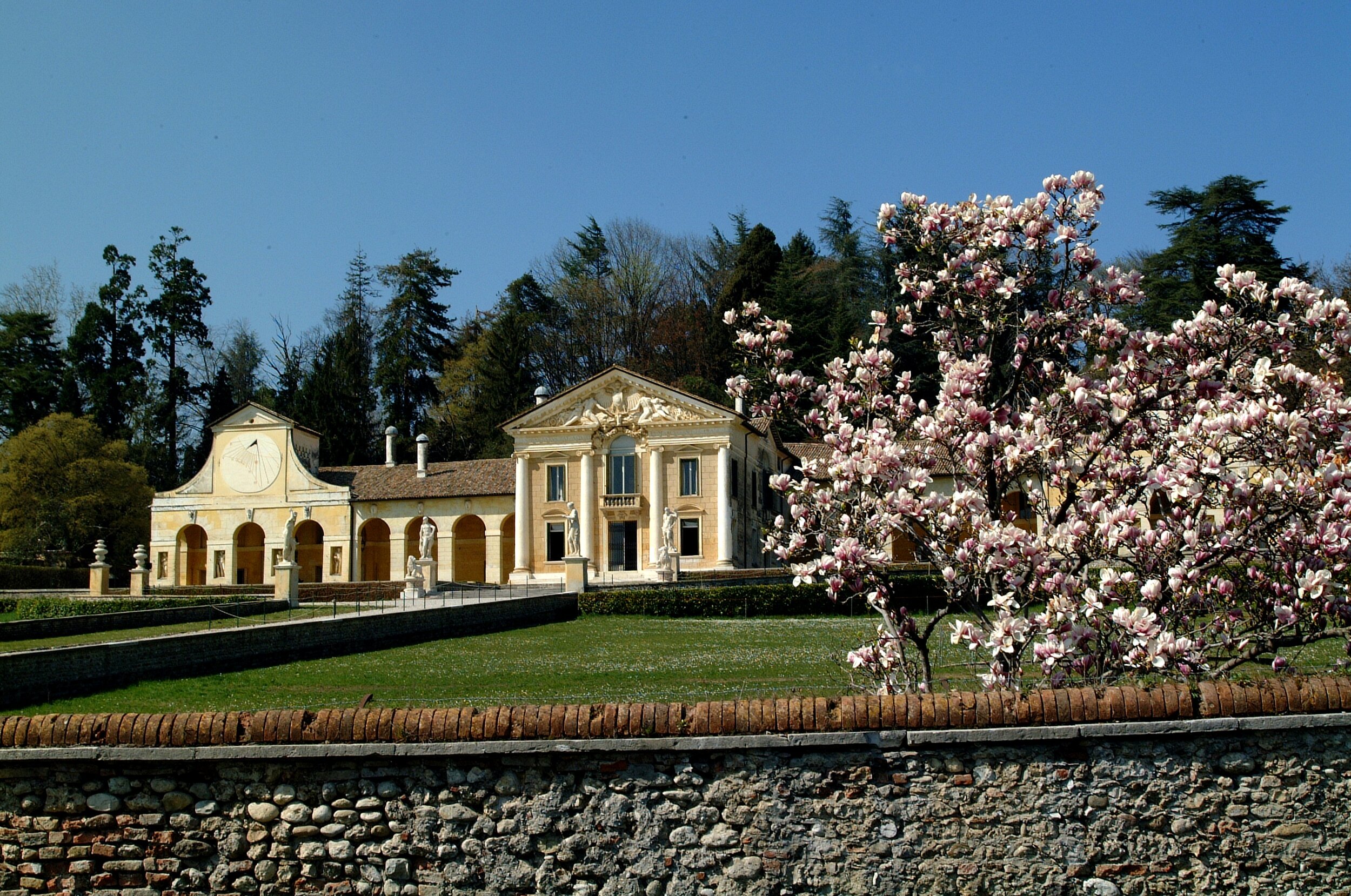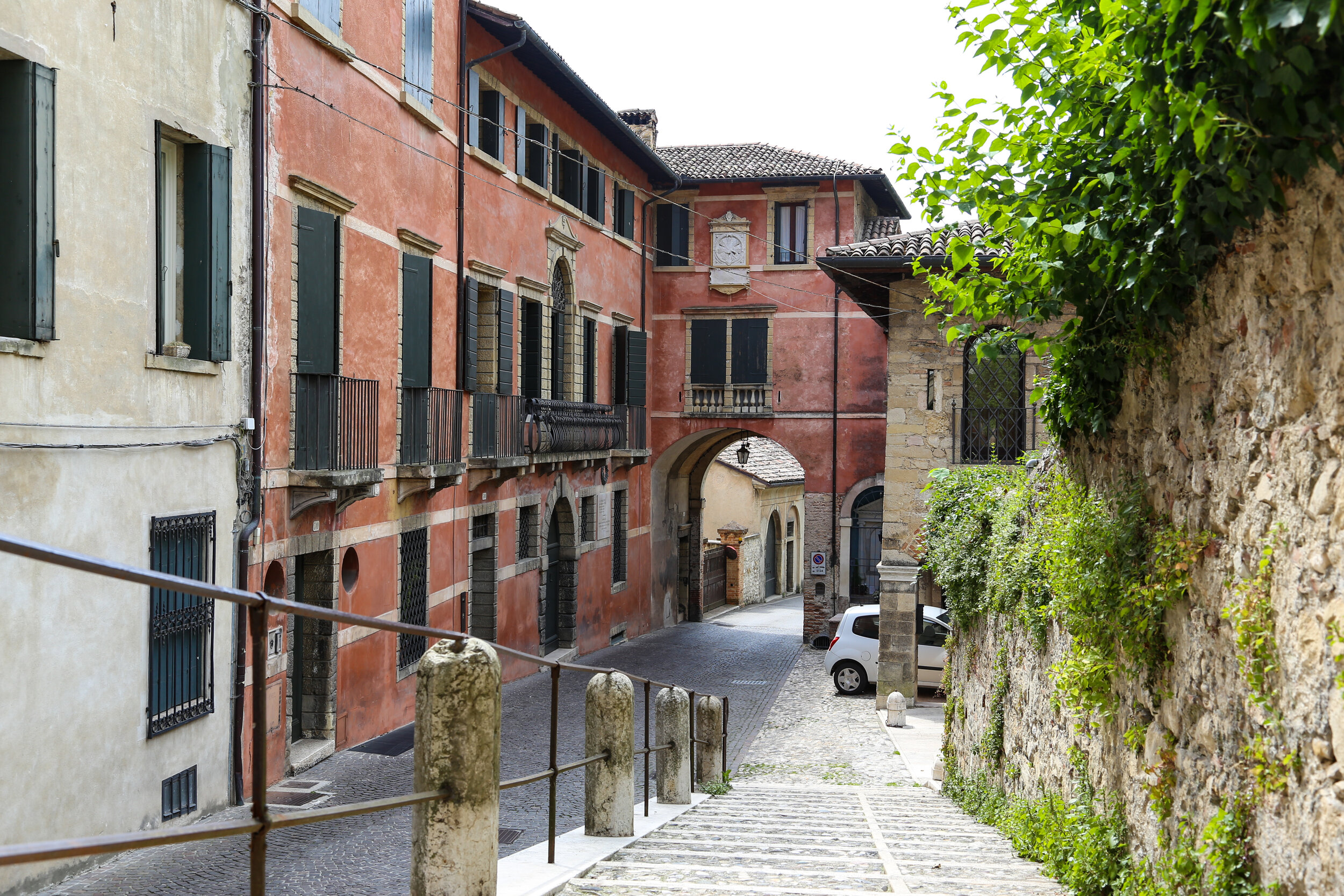A writer’s love for a special town in the Veneto region. This is a literary scrapbook retracing Robert Browning’s steps in Asolo. ‘Asolando’ is the last volume of poems by Robert Browning, published 1889. The title derives from a fanciful verb ‘asolare’, ‘to disport in the open air, to amuse oneself at random.’ This article is an ode to Asolo, which played an important part in Browning’s life and work.
“Open my heart and inside you will see / Graved inside of it, ‘Italy’.”
The Eternal Return
Defined by Italian poet Giosuè Carducci as “the city of a hundred horizons,” Asolo is one of the most picturesque towns in Italy. The centro storico is contained within ancient walls that branch off from the 12th century fortress. There are testimonies of its 1,000-year-old history at every turn. Asolo was a key location in the Venetian Republic and the town was ruled by Venetian Caterina Cornaro, formerly Queen of Cyprus, for 20 years until 1509.
Casa Duse from Via Santa Caterina
Perched in the rolling Asolan hills, the town was a destination for poets, writers, artists and travellers who found inspiration and harmony as well as history and culture in the town. English poet Robert Browning was no exception. Asolo was always a magical place for him. Besides being transfixed by its beauty and historical richness, it was where he first got a clear sense of the immensity of the poetic challenge ahead of him. It was here where Browning overcame his writer’s block and, subsequently, went from being a largely unrecognized writer to one of England’s most celebrated Victorian writers. His narrative poem Pippa Passes (1841) provoked controversy for its portrayal of a young peasant girl’s movements through the streets of Asolo. Yet Browning’s boldest writing about Asolo came in his prologue from Asolando, published the day he died on December 12, 1889.
Aerial view of Asolo
In the town, the memory of the enamoured poet continues to this day. Interestingly, the bicentenary of his birth had been largely overlooked in his native Britain but was celebrated with a festival in Asolo in September 2012. His legacy was explored through poetry readings and presentations during the festival. Four years later, in 2016, members of the London Browning Society attended a cultural meeting and visited Asolo. These commemorative events were organized by Vittorio Zaglia, whose knowledge of Browning’s works and time in Asolo is profound.
Considering Browning had only visited Asolo three separate times in his entire life, the legend fervently lives on. Under Zaglia’s tutelage, let’s revisit the steps of this literary giant.
“The poet visited Asolo the first time in 1838, when he was only 26. He went to study with Italian tutor Angelo Cerutti, as he had been fascinated by Dante’s Divine Comedy, with a keen interest in troubadour, Sordello Da Gioito. This particular study, and first time in the town in his life, inspired his work, Sordello,” says Zaglia.
La Rocca
The road to Paradise
He arrived in Trieste via a merchant ship from England and went on to Venice. He travelled to the charming town of Castelfranco in a carriage and continued the rest of the tour on foot. After a long walk from Castelfranco and Bassano, his first glimpse of Asolo was from La Rocca, the medieval fortress which stands on top of Monte Ricco.
“This view made him understand he had to change his way of conceiving poetry, giving a social meaning to what he was writing. This is the reason why he wrote Pippa Passes, which gave him the sense of a new way of writing,” informs Zaglia.
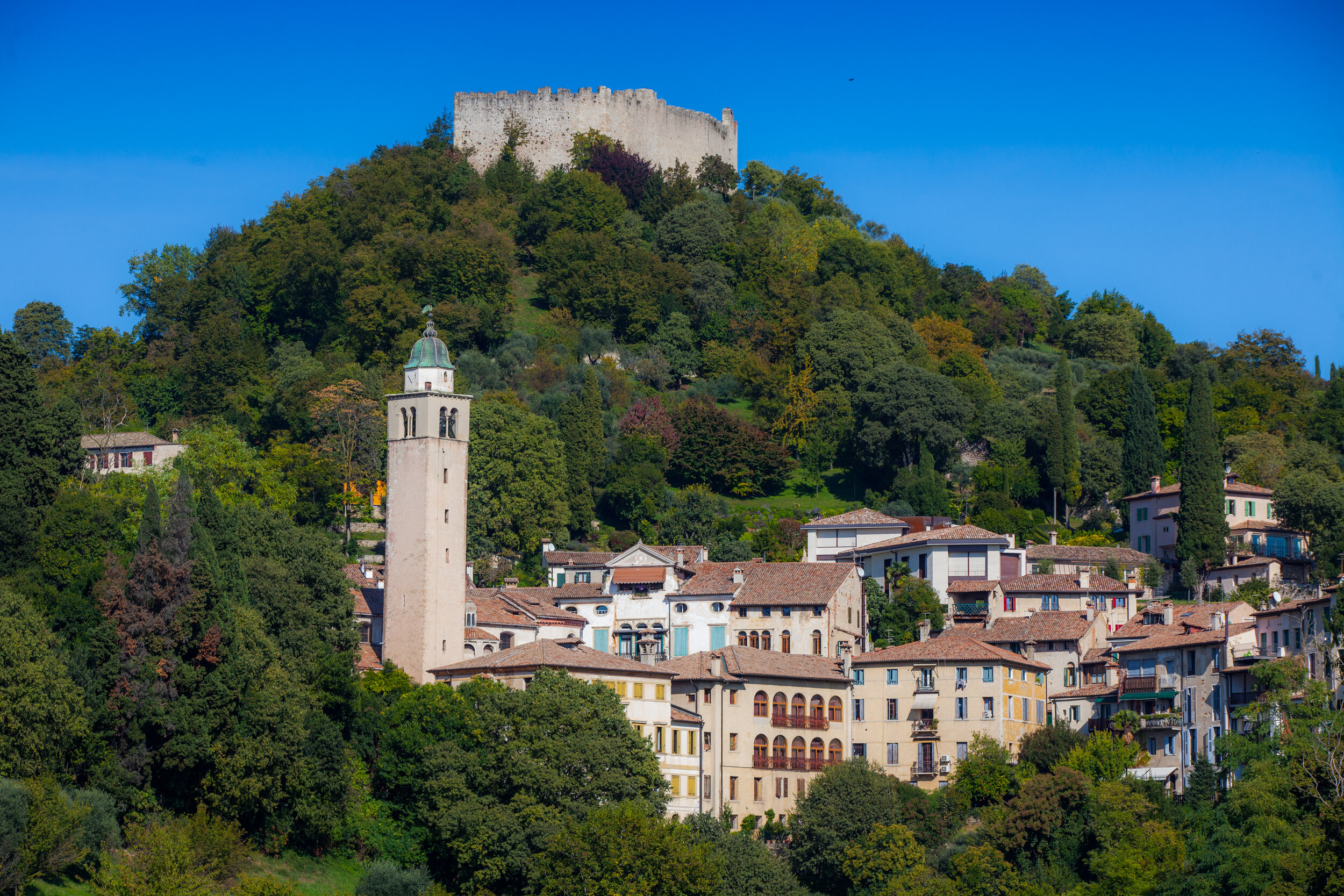
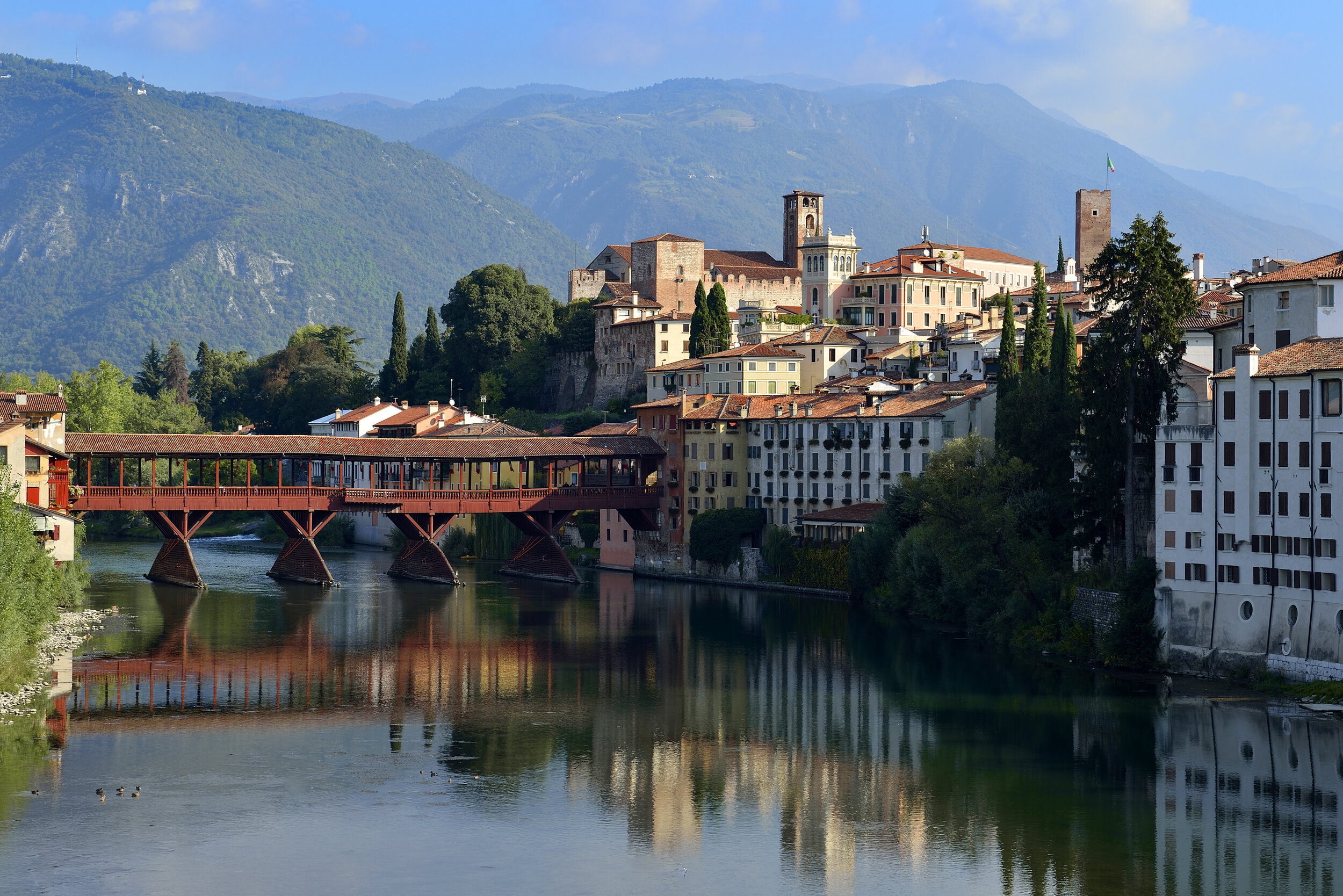
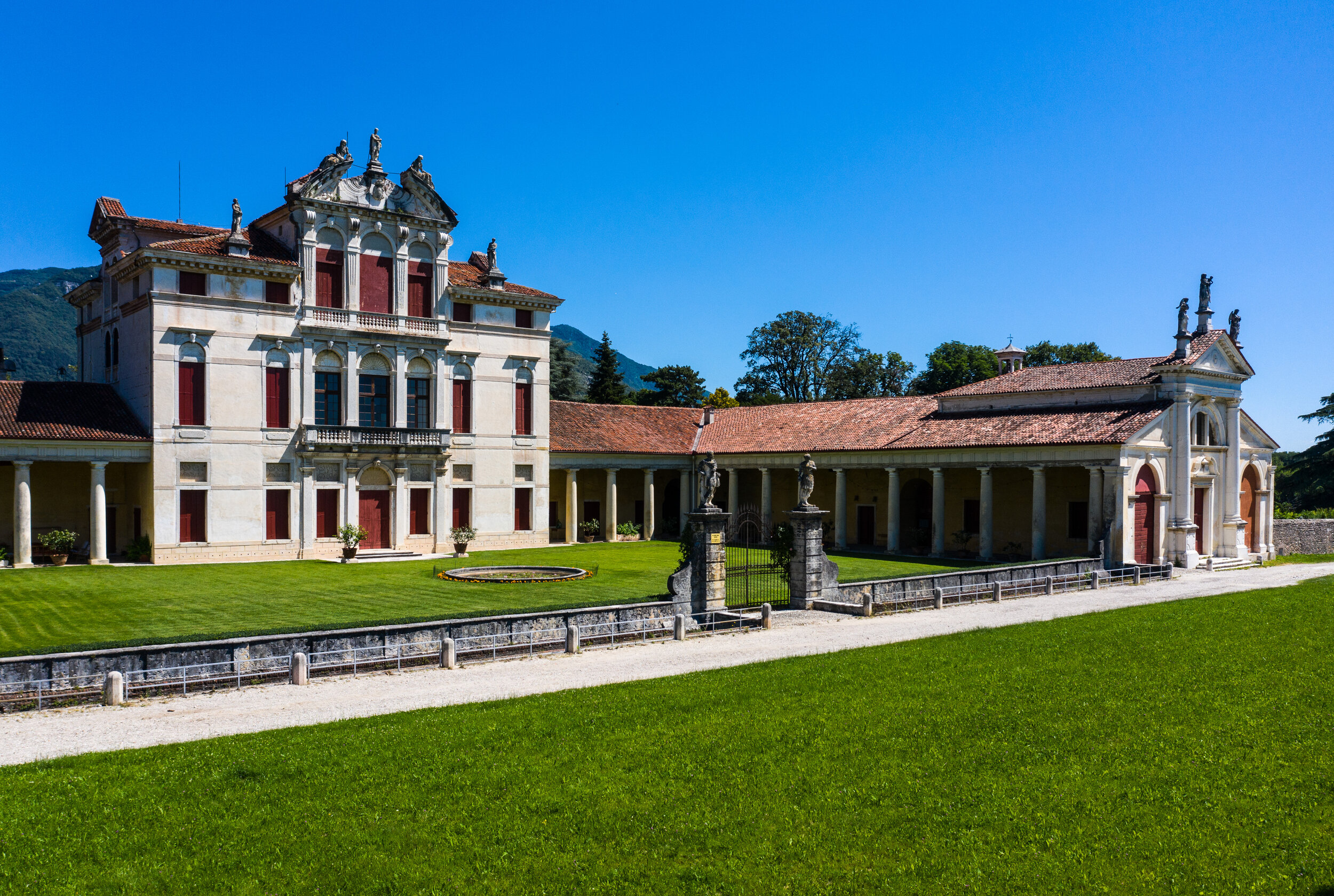
In 1841, Browning publishes Pippa Passes, inspired by his first visit in Asolo. The story takes place in La Torricella, which is one of the towers of the castle dedicated to the Queen Caterina Cornaro.
La Torricella
Photography by Cesare Gerolimetto
In 1846, Browning secretly married the poet, Elizabeth Barret. They went to live in Italy just a few days later, leaving their families behind in England forever.
He and his wife spent their entire married life mainly in Florence with stints in Pisa, Siena and Rome, until she died in 1861 at the age of 55. Shortly after her death, Browning returned to London with his only son, Pen, who was 12 years-old.
Even abroad, Browning became fascinated with the art and cultural environment of Italy and would later describe the country as his university.
“It is quite curious to say that he never took his wife to Asolo, probably because his love for this town was too intimate. He came back only 40 years after his first visit, in 1878, together with his sister Sarianna. And he experienced the same powerful emotions as in his youth, mainly when he climbed to the Rocca, where he could find the same echo he had heard so many years before,” recounts Zaglia.
The Castle of Asolo, also referred to as Castello di Caterina Cornaro, dates back to the 10th century. Linked to the city walls, the castle still preserves three of the four watchtowers that surround the castle.
“I used to dream of seeing Asolo in the distance, making vain attempts to reach it,” Robert Browning once told his sister of this one recurring dream he would have, which did not cease until his return to the town decades later. When he did finally return with his sister, they lodged at the Hotel Aquila D’Oro, which Zaglia confirms no longer exists.
Via Robert Browning
He eventually purchased Casa Tabacchi in the town centre in Piazza Giuseppe Garibaldi on what used to be called Borgonovello. The town changed the name to Via Roberto Browning in May of 1912 in honour of the poet’s 100th birthday.
In 1880, Browning met Katherine De Kay Bronson in Venice, and they became close friends. She hosted him in her home in Venice many times. In 1889, Browning suggested she buy a house in Asolo, which is now called Casa La Mura.
“The relationship with Katherine Bronson certainly is a romantic one, and this is the reason why he dedicated his last literary work Asolando to his friend,” says Zaglia.
Palazzo della Loggia della Ragione is one of the historic buildings of Asolo. The frescoes on the palace were painted around 1588.
Bronson once wrote: “Robert, never tired of gazing from the Loggia of La Mura at the view over the plain, and of pointing out sites he had kept clear in his mind while writing Sordello and Pippa Passes.”
“Robert was a great walker and used to walk to Possagno, Antonio Canova’s house, Maser and visit the Villa Barbaro, built by Andrea Palladio and frescoed by Veronese, San Zenone Alberico’s castle and Bassano,” says Zaglia.
“I was right to fall in love with this place 50 years ago, was I not? We outlive some places, people, and things that charmed us in our youth but the loveliness of this is no disappointment; it is even more beautiful to me now than then. ”
The Last Visit to Asolo
In 1889, Browning went to stay with his son Pen, by now a painter, and his wife in Venice at Ca’ Rezzonico. On December 12th, he received news that his last volume of poetry, Asolando, had sold out on the same day it was published. He told his son he was more than satisfied and died a few hours later. He was 77 years-old.
After Robert’s death in 1889, his son began living in Asolo, where he bought and resold many old palaces (Villa Scotti Pasini, Villa Belvedere, Casa Duse) to rich English or American people, starting the Anglo-Saxon colony in Asolo.
“Robert’s wish was to purchase La Torricella and transform it into a school for the youth in the town. He did not fulfil this wish as he died before the local government approved it. But in 1893, the tower that Browning called “Pippa’s Tower” was bought by Pen Browning, Robert’s son,” says Zaglia. To honour his father’s wish, La Torricella became the site of the school of Antico Ricamo (embroidery) that same year
The Villa Scotti Pasini overlooks the central market piazza of Asolo, and is one of the best preserved in Veneto. The property passed from the Bressa family to the Pasini, who during the 18th century enlarged the villa extensively, until the end of the 19th century when it was acquired by Robert Browning’s son who gave it its current look. During the 20th century the property passed to the Pasini family. The villa is private property and is not available for visits.
Big Love
This concludes the literary scrapbook tour of Robert Browning’s time in Asolo. Revisiting the places, people and events that inspired and influenced a writer who dearly loved Italy, who wrote about it and was forever transformed by the experience. It is heartwarming to know that centuries later, the love affair between writer and host country is reciprocated with tributes that honour and echo his presence in the places he once dwelled. After all, a mutual love and admiration is the best kind of love.
I could get used to this view of Asolo too.
For more information on Asolo, visit www.asolo.it
If you want to discover the Veneto region, go to www.veneto.eu









